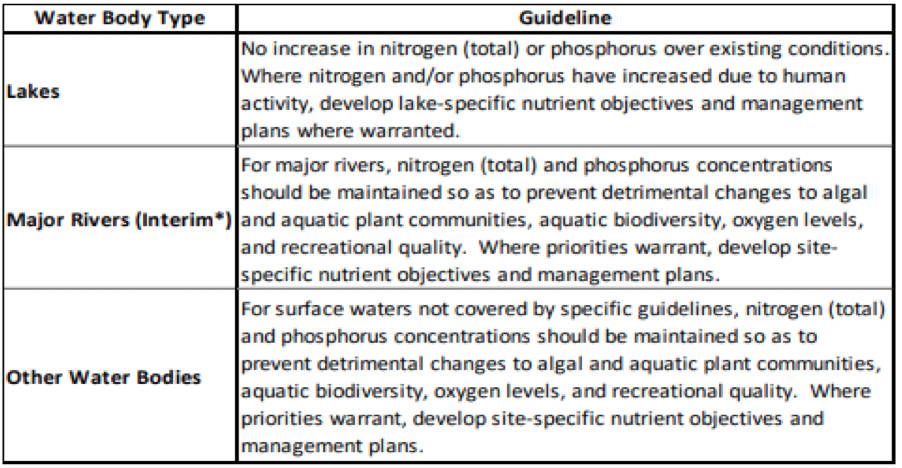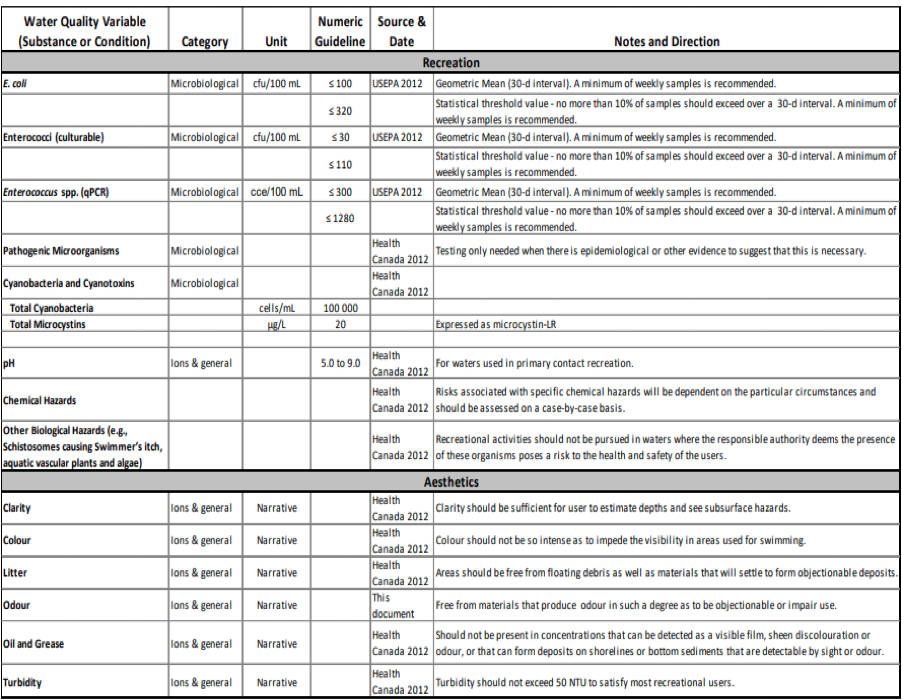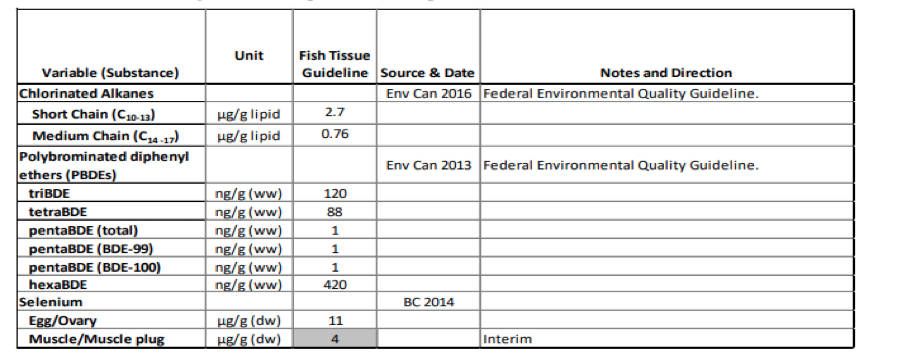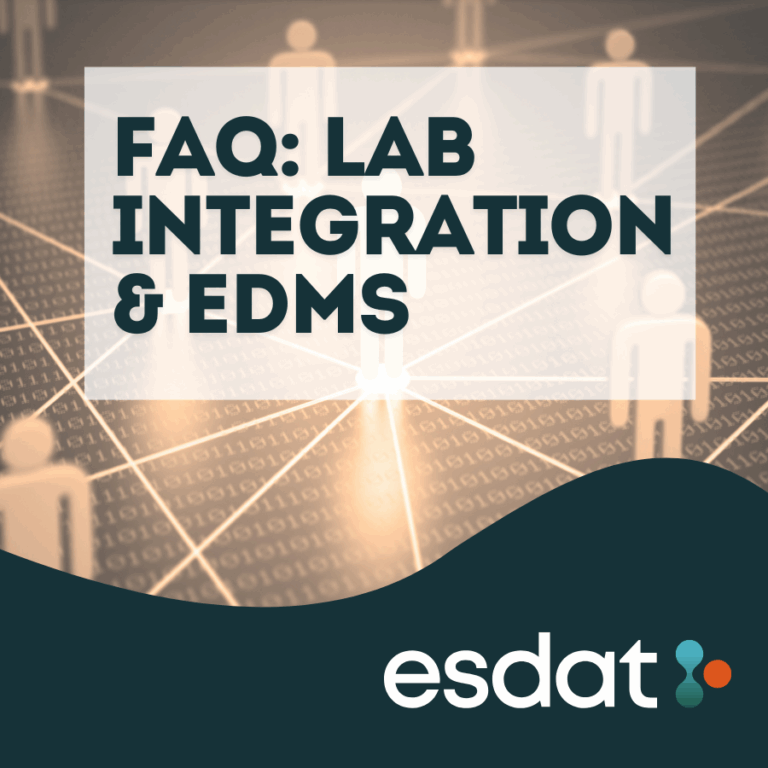Surface Water Quality Guidelines for the Protection of Aquatic Life
Certain compounds are hazardous, and other aspects of the quality of the water, such as pH, temperature, exposure and toxicity modifying factors (ETMF) and hardness, can affect this toxicity.
KaizenLAB laboratory integration with ESdat Environmental Data Management Software.
Nutrients
Nutrient enrichment is critical for Alberta’s lakes, rivers, and streams. As not all nutrient types are directly harmful, typical standards for protecting aquatic life cannot be used to derive criteria for total nutrients. However, the nutrient increase can have several negative consequences, such as unfavourable algae and aquatic macrophyte growth that can impair aesthetics and recreational opportunities, toxic cyanobacteria outbreaks, changes in species assemblages, and ultimately a decline in dissolved oxygen levels and biodiversity.
Given the large variety and factors affecting them, it is only possible to pinpoint a single nutrient content that would be safe or acceptable for some Alberta streams. The 0.05 mg/L total phosphorus value and 1.0 mg/L total nitrogen value were previously reported. The table below shows surface water quality guidelines for nutrients.

Metals and Petroleum Hydrocarbons
In most cases, total metals are typically favoured over the dissolved fraction. This is done to account for all exposure routes for handling any potential transformation of the metal components fractions in receiving waters into more bioavailable forms. New approaches for creating and expressing metal guidelines are emerging in Alberta rivers, mainly using the biotic ligand model (BLM). However, the BLM is still under development and frequently requires substantial supporting data for calculation, which restricts its current use. Furthermore, the guideline values for Petroleum Hydrocarbons are in good agreement with standards for water quality derived using surrogate hydrocarbons for accounting for their maximal water solubility and toxicity reference values.
Surface water guidelines for Recreation and Aesthetics
The recreation and aesthetic guidelines (Table 2) were mostly adapted from the Recreational Water Quality Criteria and the Canadian Recreational Water Quality Guidelines. Recreational water quality standards are intended to protect people from accidental ingestion, cutaneous exposure, or inhalation of chemicals or biological threats that can harm them. They are meant to minimize the health risks to the average recreational water user (e.g., swimmers, windsurfers, water skiers, boaters, and fishers).

The table above shows surface water guidelines for Recreation and Aesthetics. The narrative goals are largely intended to ensure that users have a favourable impression of the waterways. Waters should therefore be clear of floating trash, unpleasant materials, and foul odours. However, the aesthetic goals might also affect aquatic life forms and water users’ health and safety (e.g., safety risk brought on by turbidity or debris).
Water Quality Guidelines for Agriculture
The irrigation standards guidelines were created to safeguard vulnerable crop species grown in Canada during their entire life cycle. These guidelines are determined from the geometric mean of the lowest observed adverse effect level (LOAEL) and no-observed negative effect level (NOAEL), divided by an uncertainty factor.
Moreover, the Livestock Water Guidelines were created to protect all Canadian livestock species and were mostly adapted from the CCME Guidelines for the Protection of Agricultural Water Uses. The guidelines are basically based on the contaminant’s tolerated daily intake rates, daily water consumption, body weights, the likelihood of bioaccumulation, and the percentage of contaminant exposure via drinking water.
Sediment Quality Guidelines
To fully implement this technique, it is necessary to establish logical connections between the specific sediment (such as total organic carbon content and particle size distribution) and the water column above it (such as pH). A spiked-sediment toxicity test (SSTT) technique be utilized as well to derive complete guidelines; however, because of insufficient data, no such guidelines have yet been derived for freshwater sediments.
Fish Tissue Guidelines
The tissue guidelines listed in Table 3 are intended to safeguard fish from negative consequences. They offer another criterion for determining the negative impact on an aquatic ecosystem.

Tissue Residue Guidelines to Protect Wildlife Consumers of Aquatic Biota
The tissue residue guidelines (TRGs ) are intended to be levels that should result in a very low risk of the chemical having adverse effects on higher-order consumers. The TRGs are primarily intended for harmful, bio-accumulative pollutants that are persistent and, under the Canadian Environmental Protection Act, are virtually eliminated. TRGs are developed from studies on long-term toxicity, from which a tolerated daily intake (TDI) is determined to protect the most vulnerable species and life stages.
For more information on Canada’s environmental standards, guidelines and policies
What are Surface Water Quality Guidelines for the Protection of Aquatic Life
Surface Water Quality Guidelines for the Protection of Aquatic Life are scientifically based guidelines developed to protect aquatic life and their habitats from the potentially harmful effects of various physical, chemical, and biological pollutants in surface water. These guidelines are developed by government agencies, such as the Environmental Protection Agency (EPA) in the United States. They are used to establish acceptable levels of pollutants in surface waters to protect aquatic life.
The guidelines consider the characteristics of different species of aquatic life and their sensitivity to various pollutants, as well as other factors such as the water’s temperature, pH, and turbidity. They are developed through a rigorous process that involves reviewing scientific studies, conducting laboratory and field studies, and consulting with experts in various fields.
The guidelines provide information on the acceptable concentrations of various pollutants that are safe for aquatic life, such as nutrients, metals, pesticides, and other chemicals. They also guide how to monitor and assess water quality and manage and mitigate the impacts of pollution on aquatic life and their habitats.
Surface Water Quality Guidelines for the Protection of Aquatic Life play a critical role in protecting aquatic ecosystems and ensuring they remain healthy and sustainable for future generations.
What are exposure and toxicity modifying factors (ETMF)?
Exposure and toxicity modifying factors (ETMFs) are variables that can change the toxicity of a substance and the level of exposure an individual may experience. ETMFs can either increase or decrease the toxicity or exposure of a substance, depending on the circumstances. Some common ETMFs include:
- Age: Infants, children, and older adults may be more susceptible to the toxicity of certain substances.
- Gender: Some substances may have different effects on males and females.
- Genetics: Some individuals may be more genetically susceptible to the toxic effects of certain substances.
- Nutrition: A person’s diet and nutritional status can affect their susceptibility to toxic substances.
- Smoking: Smoking can increase a person’s exposure to certain toxic substances.
- Alcohol: Alcohol consumption can affect how a person’s body metabolizes certain substances.
- Environmental factors: Factors such as temperature, humidity, and air quality can affect a person’s exposure to toxic substances.
- Occupational exposure: Certain jobs may increase exposure to toxic substances.
- Concurrent exposure: Exposure to multiple substances simultaneously can have additive or synergistic effects on toxicity.
Understanding ETMFs is essential in assessing the potential risk of exposure to toxic substances and developing strategies to minimize exposure and toxicity.
What are toxic cyanobacteria outbreaks?
Toxic cyanobacteria outbreaks, also known as harmful algal blooms (HABs), occur when certain cyanobacteria (blue-green algae) proliferate and produce harmful toxins. These blooms can appear in freshwater and marine environments and have serious health, ecological, and economic impacts.
The toxins produced by cyanobacteria can cause various health problems in humans and animals, including skin rashes, nausea, vomiting, liver and kidney damage, and even death in severe cases. In addition to direct health effects, HABs can cause economic harm by reducing property values, tourism revenue, and commercial and recreational fishing.
Cyanobacteria blooms are often caused by a combination of factors, including high temperatures, low water flow, excess nutrients (such as nitrogen and phosphorus), and other environmental stressors. Climate change may also contribute to the increase in the frequency and severity of HABs in some areas.
Monitoring and managing cyanobacteria blooms is a complex and challenging task. Prevention measures include reducing nutrient pollution from agricultural runoff and sewage discharge and implementing water treatment technologies. Public health advisories and closures of affected water bodies may also be necessary to protect human health.
What is the biotic ligand model (BLM)?
The biotic ligand model (BLM) is a tool used to predict the toxicity of metals to aquatic organisms under different environmental conditions, such as changes in pH, hardness, and dissolved organic matter. It takes into account that the toxicity of metals to aquatic organisms is dependent not only on the concentration of the metal but also on the chemical form of the metal, the chemical characteristics of the water, and the biological characteristics of the organism.
The BLM assumes that metal toxicity occurs when the metal binds to specific sites on the organism, such as gills or the digestive tract, and interferes with normal biological processes. The model predicts the amount of metal likely to bind to these sites based on the concentration of metal ions in the water, the concentration of competing ions (such as calcium and magnesium), and other water chemistry factors.
Regulatory agencies have used the BLM to develop water quality guidelines and metal standards in aquatic environments. It has also been used to assess the potential impacts of metal-contaminated sites on aquatic ecosystems and to design strategies for managing metal pollution. The BLM is a valuable tool for predicting metal toxicity to aquatic organisms, including fish, crustaceans, and molluscs.
What is a spiked-sediment toxicity test (SSTT)?
A spiked-sediment toxicity test (SSTT) is a laboratory test used to assess the toxicity of chemicals or pollutants in sediment to benthic organisms (organisms that live in or on the sediment). The test involves adding a known amount of a toxic substance to sediment samples and exposing benthic organisms, such as worms or amphipods, to the contaminated sediment.
The SSTT is a valuable tool for assessing the potential risk of contaminated sediments to benthic organisms and evaluating the effectiveness of remediation strategies. The test can also be used to compare the toxicity of different types of sediments and to assess the impact of environmental factors, such as changes in temperature or pH, on sediment toxicity.
The SSTT typically involves a range of concentrations of the contaminant of interest to determine the concentration at which toxicity occurs. The results of the test are often expressed as an EC50 value, which is the concentration of the contaminant that causes a 50% reduction in the survival or growth of the test organisms.
The SSTT is a widely used test in environmental toxicology and is often required by regulatory agencies to assess the toxicity of sediments in areas where contamination is suspected or known to occur. It can also be used to evaluate the effectiveness of sediment remediation strategies, such as dredging or capping, in reducing the toxicity of contaminated sediments.
What are tissue residue guidelines (TRGs )?
Tissue residue guidelines (TRGs) are tools used to assess the potential ecological risk of chemical contaminants in aquatic and terrestrial ecosystems. TRGs are based on the concentration of a chemical that is measured in the tissue of an organism, such as a fish or a bird. They are used to determine whether that concentration poses a risk to the organism or other organisms in the ecosystem.
TRGs are often developed by regulatory agencies and are based on the toxicity of a chemical, the potential for bioaccumulation, and the likely exposure of organisms in the ecosystem. The guidelines are typically expressed as a concentration of the chemical in the tissue of an organism, such as milligrams of chemical per kilogram of tissue.
TRGs help assess the potential risk of chemical contaminants to wildlife and in developing strategies to mitigate that risk. For example, TRGs can set water quality standards for pollutants that may harm fish or other aquatic organisms. They can also be used to develop guidelines for the disposal of hazardous waste or to evaluate the effectiveness of pollution control measures.
TRGs are based on a conservative approach, meaning they are designed to protect the most sensitive organisms in the ecosystem. As such, TRGs are often set at levels lower than those known to cause direct harm to organisms to account for the potential for indirect effects or differences in sensitivity between different species or life stages.
Related Articles to Alberta Surface Water Quality Guidelines
What are Alberta Tier 2 Soil and Groundwater Remediation Guidelines?
What are Alberta Tier 1 Soil and Groundwater Remediation Guidelines?
What are Canada’s environmental guidelines and policies?
KaizenLAB laboratory integration with ESdat Environmental Data Management Software.







[…] What are Environmental Quality Guidelines for Alberta Surface Water? […]